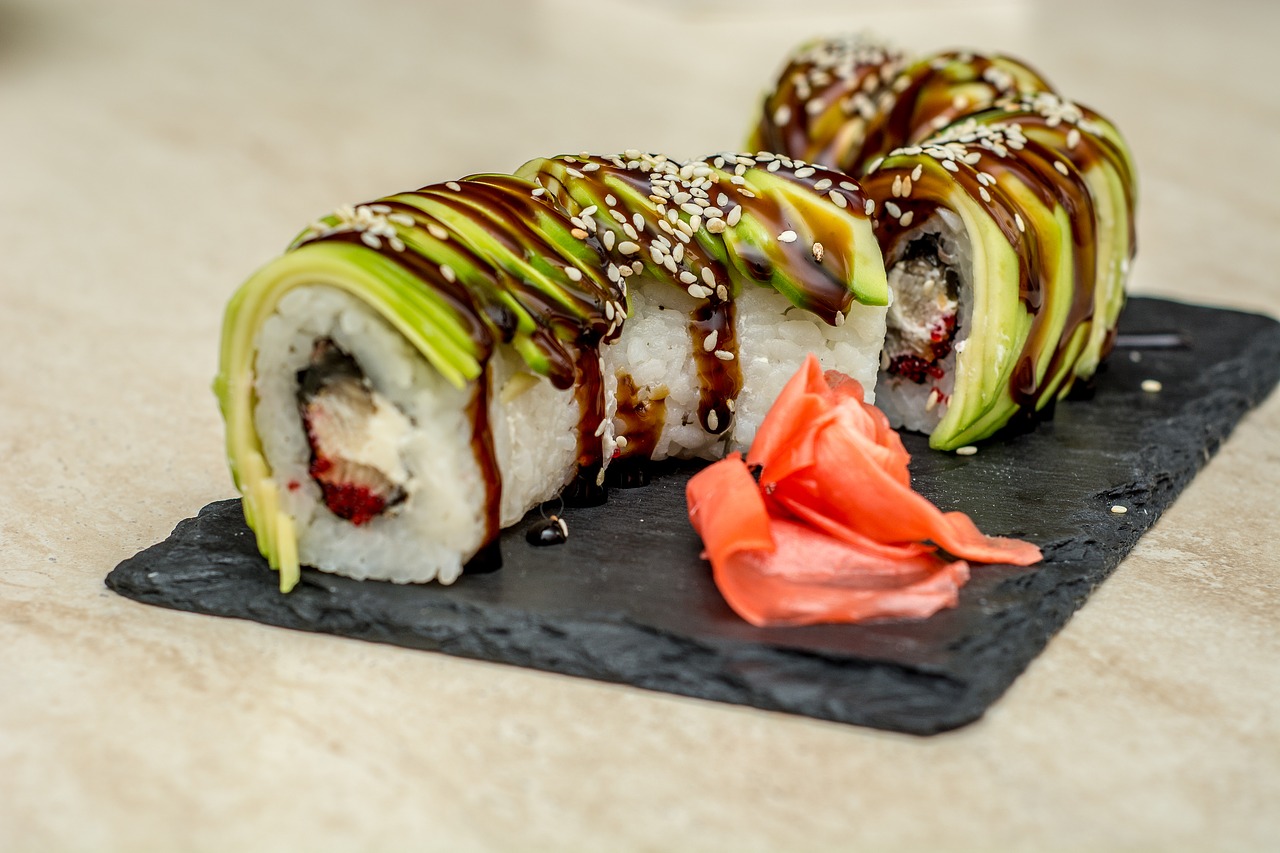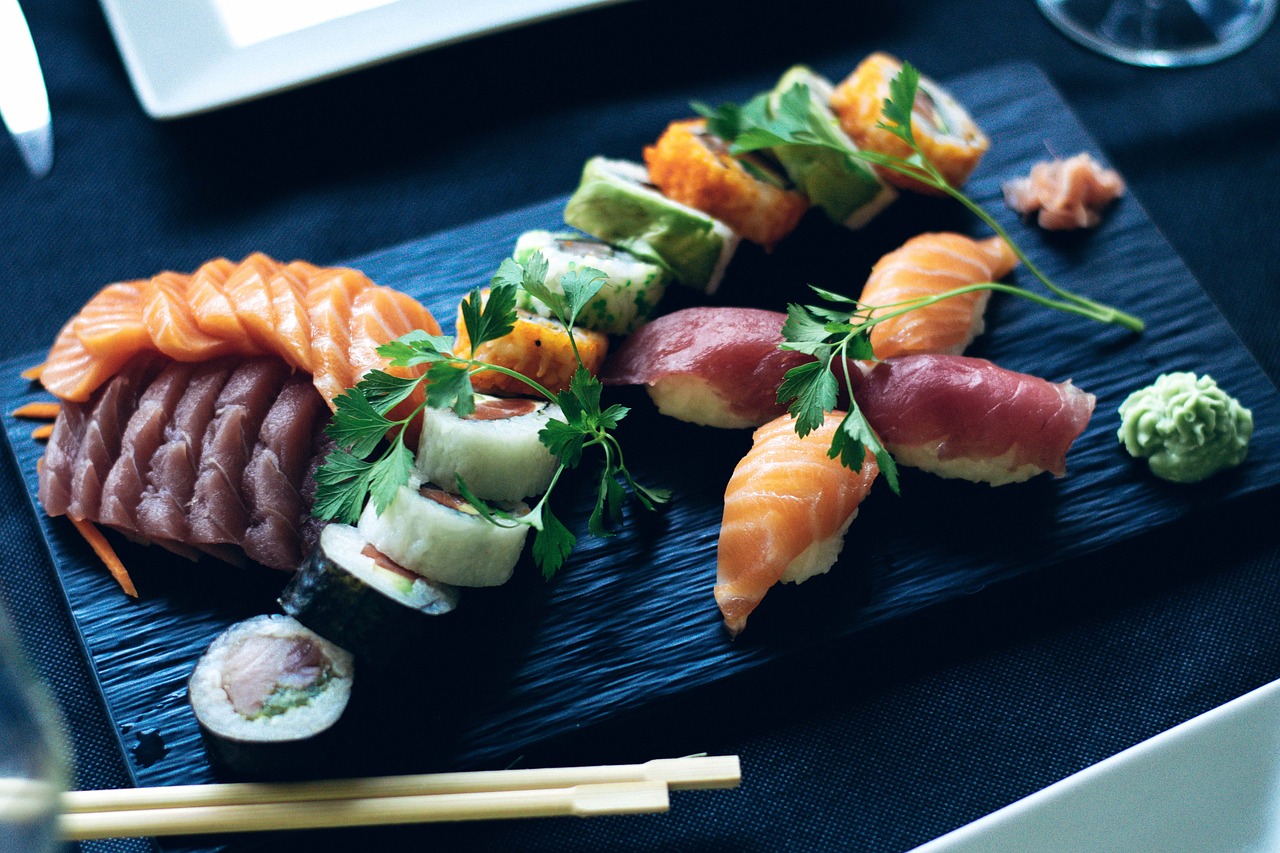Calories in Japanese Food - Health Choices Eating Out or at Home
While Japanese dishes are generally very healthy, people dining at restaurants, getting take-aways and those who want to make Japanese food at home should be aware of the traps in terms of calories and fat content.
In this article I aim to identify the hidden dangers and traps for the unwary in terms of high-fat and high calorie ingredients and dishes. I also provide healthy alternatives for those on a diet or who are trying to lose weight.
Japanese dishes are usually seafood-based and mostly are served without the thick spicy sauces (laden with sugar and carbohydrates) that often accompany Chinese food. However, sweet sugar laden teriyaki-style sauces are common but there are many simple substitutes. Portion sizes are generally small by American standards and diners should not be tempted to order too many dishes.
The general ingredients in Japanese food consist of small portions of meat, fish, tofu or chicken combines with lots of fresh vegetables, seafood, herbs, noodles and rice. Most dishes are stir-fried grilled, broiled, braised, simmered or steamed. However some dishes and ingredients are fried and this can really increase the calories and fat contents of dishes.
Healthy Choices
Hidden Dangers and What to Avoid
High Sodium - Request that your dishes be cooked with minimum amounts of fish sauce, soy sauce, other sauces or MSG, all of which are high in sodium. Also request minimal amounts of miso and teriyaki sauces which have high sodium contents.
High-Fat - Tempura and similar dishes are coated in batter and then fried. The batter soaks up the oil dramatically increasing the oil and calories in the dish. For example, three large tempura prawns combined with tempura vegetables as an apertizer can contain as much as 350 calories and 20 g of fat.
Watch for these words and avoid such dishes due to high calorie contents:
- Teppanyaki (steak, seafood and veggies): 10-ounces has 470 calories, 30g fat
- Beef Teriyaki with sauce with rice: 1,110 calories and 37g fat
- Rainbow Roll - fried and each one has 480 calories, 10g fat
- Fried dishes such as Torikatsu (chicken) and Tonkatsu (pork)
- Katsu (breaded and fried)
- Agemono (breaded and fried)
- Tempura (battered and fried)
Healthy Choices (keep portion sizes small)
- Tofu Dengaku (grilled slices of tofu with miso): 145 calories and 4g fat
- Clear soups like dashi (fish-based stock), or Miso (52 calories, 2g fat)
- California Roll: 182 calories, 7g fat
- Tamagoyaki (egg omelette, often sweetened): 72 calories, 2g fat
- Norimaki (seaweed-wrapped sushi)
- Domburi (rice covered in vegetables, poultry, meat and egg)
- Nigiri (slices of raw fish served on a serving of rice): 36 calories, 2g fat.
- Yakitori (broiled chicken)
- Shabu Shabu (meat, veggies and seafood in boiling broth)
- Yosenabe (seafood and veggies)
- Yaki (grilled)
- Nimono (simmered)
- All Sushi dishes and sashimi (raw fish) are generally high in protein and low in fat. Avoid any special rolls and other varieties that are fried or have heavy sauces as toppings.
- Chawanmushi (chicken and shrimp baked with egg)
- Soba (buckwheat noodles) or Udon (wheat noodles) that both healthy alternatives to fried rice.
Low-Fat and Low-Calorie Substitutes for Ramen Noodles
Ramen noodles are very common in Japanese food. However these noodles while very convenient have generally been fried, dried out for storage, then added to various soups and stir-fry dishes. One good option is to select freeze-dried or baked ramen noodles, which are not fried and have reduced fat and calories.
Shirataki noodles can also be used as a substitute. They are generally made from low-fat ingredients like yam flour and tofu and they are not fried before drying.
Vegetables can be used as a substitute or some of the ramen noodles required in a recipe. This can reduce your fat intake and calories.
|
Foods to Avoid or Find a Substitute for
|
Healthy Alternative
|
|---|---|
|
Fried rice
|
Steamed rice
|
|
Miso dressing on salad
|
Lemon slice
|
|
Deep-fried dishes
|
Stir-fried dishes
|
|
Fried tofu
|
Stir-fried tofu
|
|
Vegetable Tempura
|
Edamame (soybean pods)
|
|
Shrimp Tempura
|
Sashimi
|
|
Eel Avocado roll (372 calories)
|
Vegetable roll (180 calories)
|
|
Spicy Tuna roll (290 calories)
|
Tuna Sashimi (164 calories)
|
|
Salmon, Cream cheese, Cucumber roll (379 calories, 19g fat)
|
Salmon Cucumber roll (231 calories, 4g fat)
|
|
Tonkatsu (breaded pork)
|
Beef or Chicken Teriyaki
|
|
Salt, Monosodium Glutamate (MSG).
|
Ask for your meal to be cooked without salt, monosodium glutamate (MSG) or flavourings that contain MSG.
|
|
Regular soy sauce, teriyaki sauce.
|
Use lower sodium options of soy sauces, teriyaki sauce, and other condiments such as hot mustard.
|
|
Sweet sauces (plum, sweet and sour, cherry etc.)
|
Very small servings high calorie, high fat and high sugar sauces ; or low calorie substitutes
|
|
Stir fried rice and noodles
|
Substitute steamed brown rice for white rice, cooked without added salt. Boil or steamed rice with added food morsels instead of fried rice.
|
|
Deep fried pork, chicken, fish, shrimp and vegetables, dried wontons, dumplings, fried spring rolls, fried egg rolls
|
Substitute whole wheat pasta for white pasta. Don't use fried noodlesand cook without added salt. Stir fry chicken, fish, shrimp, beef pork and vegetables with a tiny amount of oil
|
|
Dishes with lots of meat and noodles, with few vegetables.
|
Add lots of vegetables cooked by steaming or stir frying. Some vegetables to try include kale, broccoli, Bok choy, snow peas, carrots, yellow, red and green peppers, green beans, onions
|



